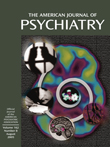Screening for Alcohol Use Disorders Among Medical Outpatients: The Influence of Individual and Facility Characteristics
Abstract
OBJECTIVE: Screening of adults in primary care has been recommended to reduce alcohol misuse. This study determined the rates and predictors of alcohol screening, screening positive, follow-up evaluation, and subsequently diagnosed alcohol use disorder in a national sample of Department of Veterans Affairs (VA) medical outpatients. METHOD: Chart-abstracted quality improvement data from the VA’s 2002 External Peer Review Program were merged with records for 15,580 medical outpatients drawn from 139 VA facilities nationwide. RESULTS: Nearly three-quarters of eligible patients (N=11,553) had chart-documented alcohol screening in the past year. Of these, 4.2% (N=484) screened positive. Of those who screened positive, three-fourths (N=370) received follow-up evaluation, and of these, 53.5% (N=198) were subsequently diagnosed with an alcohol use disorder—1.7% of the originally screened sample. Multivariate logistic regression revealed that several factors generally associated with increased risk of alcohol use disorders—including being younger, unmarried, and disabled, as well as having greater medical and psychiatric comorbidities—were actually associated with a decreased likelihood of alcohol screening. At the facility level, screening was less likely at more academically affiliated centers, and follow-up evaluation of a positive screening was less likely at the largest facilities. CONCLUSIONS: Routine alcohol screening yielded relatively few positive cases, raising questions about its cost-effectiveness. Targeted strategies may increase the value of case-finding activities among patients at greatest risk for alcohol use disorders and at more academically affiliated facilities. Targeted efforts are also needed to ensure proper follow-up evaluation at larger medical centers where patients may experience greater system-level barriers.



